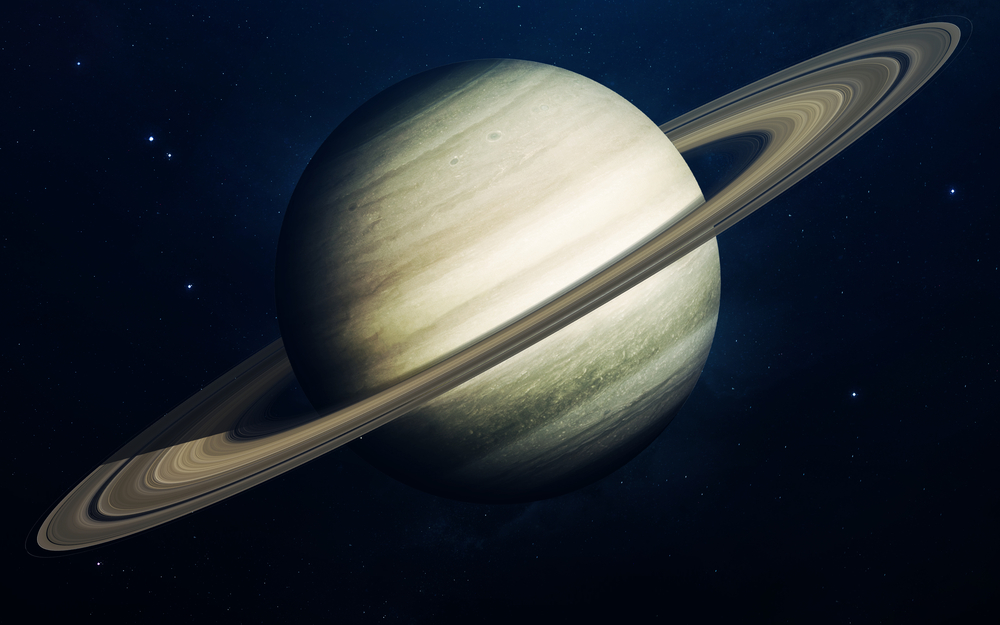
In astrology, nearly every celestial body has a retrograde period. We’re used to hearing about swift-moving Mercury appearing to travel backward, which usually happens three or four times per year. Yet even slow-moving behemoths like Saturn and Uranus have astrological retrogrades. Lasting from a few weeks to several months, outer planet retrogrades are thought to have some unique effects on life on planet Earth.
What Are Retrogrades?
Retrograde is simply shorthand for “apparent retrograde motion.” Astrostyle explains that retrogrades affect how planetary motion appears when observed from Earth. Normally, planets move from east to west in our night skies. During retrograde periods, they appear to change direction and travel from west to east. These occur when Earth passes other planets during its yearly trip around the sun.
Retrogrades are visual illusions, but astrologers credit them with very real impacts. They change planets’ fundamental energies, turning them inward or weakening their effects. Retrogrades happen during a planet’s transit periods through a zodiac sign, but they also appear in people’s birth charts.
Jupiter: Big Impacts From a Big Planet
Jupiter was the Roman god of the sky and thunder. He was also the king of the gods, which explains the planet’s astrological associations with exploration, knowledge, and excess. Mystica Astrology mentions that it represents the potential for both abundance and indulgence. During its 12-year orbital period, it takes one year to move through each sign. Its retrogrades last about four months. In 2020, this period begins on May 14 and ends on September 12.
Astrologers regard Jupiter retrogrades as opportunities for introspection and reflection. They may call for less risk-taking and more evaluation before tackling new endeavors. Mystic Medusa explains that retrograde Jupiter in a natal chart can result in someone who’s less overtly jovial, and Astrology.com adds that such a person possesses internalized positivity and benevolence.
Saturn: The Complicated Father Figure
The ancient Greeks knew Saturn as Cronus, the god of time, but he also governed agriculture and wealth. In astrology, the ringed planet symbolizes authority, limitations, discipline, and time cycles. Saturn’s orbit around our sun last 29 years, and “Saturn return” refers to the planet’s return to its original position at the time of a person’s birth.
Saturn travels through a zodiac sign in about 30 months. According to Astrology.com, it experiences one retrograde per year that lasts about 140 days. Saturn’s 2020 retrograde starts on May 11 and ends on September 29. Being an outer planet, its retrogrades are thought to have less drastic effects than Mercury or Venus retrogrades. However, it still presents opportunities for reassessment. We may need to let go of old rules, goals, and aspirations that no longer serve us and adopt new plans.
Uranus: Harbinger of Genius and Chaos
Located about 1.8 billion miles from our sun, Uranus is one of the most unusual planets in our system. Since this giant’s rotational axis is nearly parallel to its orbital plane, it actually spins on its side. It’s also named for the primordial Greek god of the sky, whose descendants included Cronus and Zeus. This distant body takes a whopping 84 years to complete one solar orbit, staying in each sign for about seven years.
The blue-green planet retrogrades once a year. Its next retrograde period starts on August 15 and ends on January 14, 2021. For astrologers, this time can bring chaotic thinking and aligning with causes for less-than-rational reasons. This planet shakes up the status quo, but AstroStyle cautions that such a shake-up should be purposeful.
Symbolism in the Heavens
Located vast distances away from Earth, the first three outer planets continue to fascinate scientists, astronomers, and casual observers today. Astrologers point to changes in their fundamental energies during retrograde periods. Whether real or symbolic, retrogrades offer clues to how humans see the world around them.

